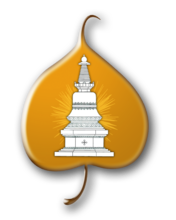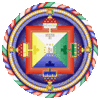About Pujas
![]()
A puja is a prayer gathering that is usually focused on a particular deity. It is a powerful way to make or deepen your connection to the deity or teacher – in fact the very word puja comes from the Sanskrit for homage or offerings.
Pujas are based on the seven limbs of spiritual practice: prostrations, offerings, confession/purification, rejoicing, asking the guru to remain, asking the guru to teach, and dedication. Since pujas are usually performed while seeing the Guru as Buddha, according to our Spiritual Director, Lama Zopa Rinpoche, this makes the practice particularly powerful.
Anyone is welcome at all pujas.
Puja practice extends beyond the recitation of prayers and mantras to include participating in the setup and takedown of the gompa and offerings. We encourage everyone to join in this part of the practice, and if you don’t know what to do, an experienced student will happily show you. We’ve labeled below which pujas are best for beginners to help you find a place to start.
Kadampa Center primarily offers three types of puja: Guru Puja, Medicine Buddha Puja, and Tara Practice. Most pujas are particularly beneficial for various objectives. Please click below for details about each of the pujas.
Here are some handy links to learn more about specific pujas, what to expect when you come, and how to deepen your participation:
-
Medicine Buddha Puja: Recommended for beginners and up. Anyone may sponsor a regularly scheduled monthly Medicine Buddha puja.
-
Tara Practice: Recommended for beginners and up.
-
Guru Puja with Tsog: Recommended for intermediate students and up.



